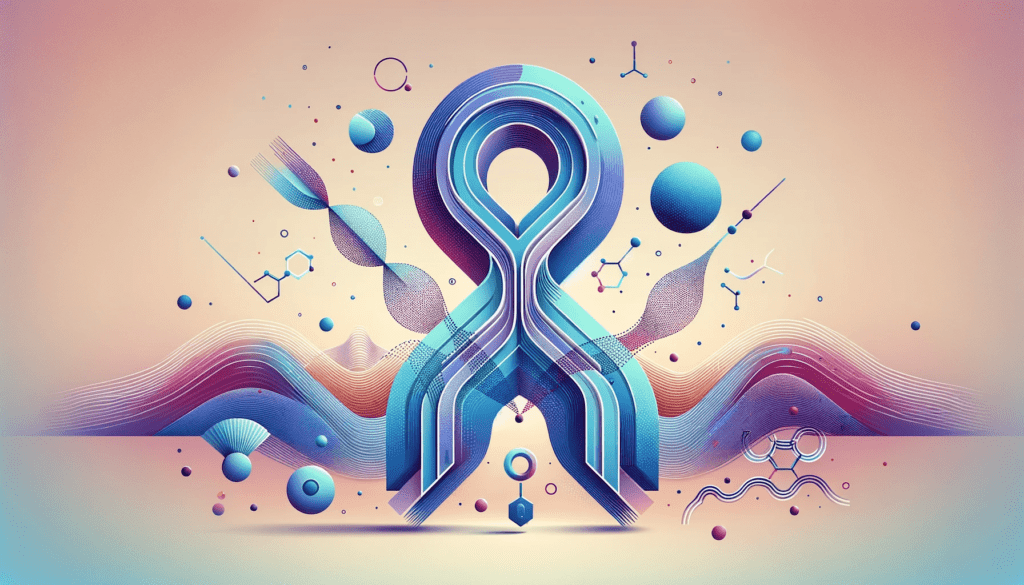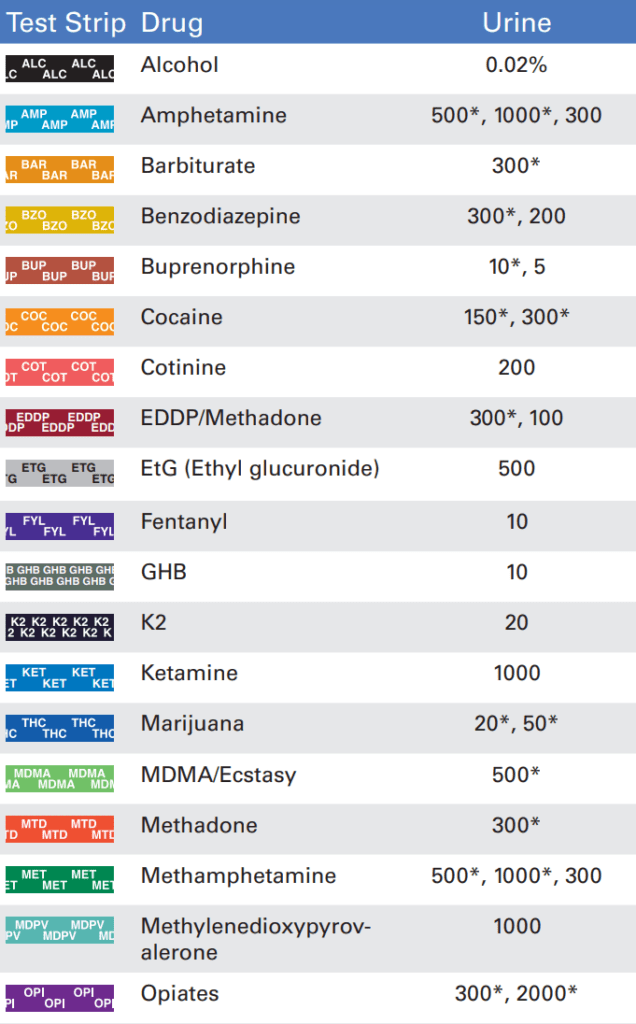Urine drug tests are a popular method for detecting the presence of drugs or their metabolites (what a drug breaks down into) in a person’s system. They’re commonly used because they’re non-invasive, relatively inexpensive, and can detect drug use from days to months prior, depending on the substance.
When you consume a psychoactive substance (a substance that affects your mind), your body processes it, and the remnants end up in your urine. These remnants are what the tests look for.
Types of Urine Drug Tests

Immunoassay – Initial Tests
It’s quick and cost-effective but may sometimes produce false positives (indicating drug use when there hasn’t been any).
- Enzyme Multiplied Immunoassay Technique (EMIT):
- This is one of the most common and rapid screening methods.
- It uses antibodies to detect the presence of a drug or its metabolites.
- While cost-effective and fast, it can be prone to false positives and negatives.
- Radioimmunoassay (RIA):
- Uses radioactive isotopes and antibodies.
- It’s very sensitive but less commonly used due to the risks associated with radioactivity.
- Fluorescence Polarization Immunoassay (FPIA):
- Utilizes the polarization of fluorescent light to detect drugs in urine.
- It’s sophisticated and sensitive but more expensive than EMIT.
- Enzyme-Linked Immunosorbent Assay (ELISA):
- Involves an enzyme that produces a detectable signal (often colorimetric) when the target drug/metabolite is present.
- Widely used due to its balance between sensitivity, specificity, and cost.
Chromatographic Methods – Confirmatory Tests
If an immunoassay test comes back positive, this test is often used to confirm the results. It’s much more accurate but also more expensive.
- Gas Chromatography (GC):
- This method separates individual components in the urine sample based on volatility.
- It’s not often used alone due to the inability to volatilize all drugs without decomposition.
- Gas Chromatography-Mass Spectrometry (GC-MS):
- Combines GC separation with mass spectrometry (MS) identification.
- It’s the gold standard for confirmatory testing due to high specificity and sensitivity.
- High-Performance Liquid Chromatography (HPLC):
- Separates substances in liquid form and is useful for drugs that decompose at high temperatures required for GC.
- Often coupled with MS for enhanced specificity.
- Liquid Chromatography-Tandem Mass Spectrometry (LC-MS/MS):
- A sophisticated technique that combines liquid chromatography with two stages of mass spectrometry.
- Extremely sensitive and specific, often considered the definitive method for drug quantification.
Urine Drug Test Panels

Urine drug tests are also categorized based on the number of substances they screen for, usually referred to as “panels.” Each “panel” typically tests for a specific set of substances, which can range from common illegal drugs to prescription medications that have a potential for abuse. The most common panels include the 5-panel, 10-panel, and 12-panel tests, among others.
5-Panel Drug Test
This is the most basic test and is often used for employment, DOT (Department of Transportation) testing, and many employers because it covers commonly abused drugs. It typically screens for:
- Amphetamines (including methamphetamine)
- Cocaine
- Marijuana (THC)
- Opiates (such as heroin, morphine, and codeine)
- Phencyclidine (PCP)
10-Panel Drug Test
A more extensive screening, the 10-panel test is preferred in settings like professional sports, healthcare, or roles with higher security concerns due to its broader range. It typically covers the drugs in the 5-panel test and adds:
- Barbiturates (like phenobarbital, secobarbital)
- Benzodiazepines (like Valium, Xanax)
- Methaqualone (Quaaludes)
- Methadone (used for opioid addiction treatment)
- Propoxyphene (painkiller, now largely discontinued due to safety concerns
Expanded Panels
Many organizations opt for more comprehensive screening. There are 12-panel, 16-panel. They include all substances from the 10-panel test and often add:
- Oxycodone/Percocet/OxyContin
- Prescription Painkillers (e.g., Oxycodone, Hydrocodone)
- Synthetic Opiates (e.g., Fentanyl, Tramadol)
- Synthetic Marijuana (“Spice”, “K2”)
- Buprenorphine (Suboxone)
- MDMA (Ecstasy)
All panels typically use an initial screening method (like an immunoassay). If a positive result arises, a more accurate confirmatory test, such as GC-MS, is employed.
Specialty Panels
In addition to the standard panels, there are tests designed for specific drugs, particularly new synthetic substances that might not be included in broader tests. These specialty panels can be customized for:
- Synthetic Cathinones (“Bath Salts”)
- Synthetic Hallucinogens (e.g., NBOMe compounds)
- Kratom
- Designer Benzodiazepines
Why are Urine Drug Tests so Common?

The popularity of urinary tests as a drug detection method can be attributed to several reasons:
Non-Invasive: Collecting urine samples is much less invasive than other methods, such as blood draws. It doesn’t require any needles, reducing the risk of infections or complications and making the process more comfortable for the individual being tested.
Cost-Effective: Urine tests, especially initial screening tests like immunoassays, are relatively cheap to produce and administer. This makes them a preferred choice for mass screenings or routine checks.
Wide Detection Window: Urine tests offer a broader detection window for many substances compared to some other methods, like breath tests. They can detect some drug metabolites for days to months after ingestion, depending on various factors.
Easily Administered: Collecting a urine sample is straightforward. While there’s some potential for tampering (e.g., diluting the urine, substituting it), measures like temperature checks or supervised collections can mitigate these risks.
Established Protocol & Reliability: Urine drug tests have been in use for many years, leading to well-established protocols and guidelines. Over time, the technology and methods have been refined, resulting in reliable and consistent tests.
Broad Range of Detectable Substances: Urine tests can screen for a wide variety of drugs, from alcohol and marijuana to opiates and amphetamines. This versatility makes them suitable for diverse settings, from employment screenings to medical evaluations.
Concentration of Metabolites: After consumption, many drugs are metabolized in the liver and then excreted in urine. The kidneys act as a filter, concentrating these drug metabolites in the urine, making them easier to detect compared to other bodily fluids like saliva.
Storage & Transportation: Urine samples can be easily stored and transported for testing without needing special handling conditions like blood samples, which might require refrigeration.
Acceptance and Precedent: Over the years, urinary tests have gained wide acceptance in various fields, including employment, sports, and law enforcement. Their widespread use and the precedent set by their long history make them a default choice in many situations.
Urine Drug Test Timelines

The detection time for drugs in urine can vary based on several factors including the half-life of the drug, body mass and metabolism of the individual, frequency of drug use, hydration level, method of administration, drug cut-off level, and medical conditions of the test subject.
Opiates/Opioids
- Heroin: Detectable 2-5 days after use. Sensitivity can be influenced by the purity of the heroin and its route of administration.
- Morphine: Detectable 2-5 days. It’s a primary metabolite of heroin and some prescription painkillers.
- Codeine: Detectable 1-2 days post-ingestion.
- Oxycodone (e.g., OxyContin, Percocet): Detectable for 2-5 days.
- Hydrocodone (e.g., Vicodin): Generally, 2-5 days.
- Fentanyl: Typically detectable for 1-3 days, though this can vary based on use.
- Tramadol, Buprenorphine: Generally detectable for 2-5 days, though this may vary based on the specific drug.
- Methadone: Typically detectable for 2-5 days.
Benzodiazepines
The detection window can differ significantly based on the half-life of the specific benzodiazepine:
- Short-acting (e.g., lorazepam, alprazolam): Up to 3 days.
- Long-acting (e.g., diazepam, clonazepam): Up to 30 days for chronic users.
Barbiturates
Again, the detection window can vary:
- Short-acting (e.g., secobarbital): Up to 2 days.
- Long-acting (e.g., phenobarbital): Up to 3 weeks.
Amphetamines
- Methamphetamine: Detectable 3-5 days after use.
- Amphetamine (e.g., Adderall): Also around 3-5 days.
Cocaine
Cocaine is rapidly metabolized to Benzoylecgonine and is usually detectable for 2-5 days.
MDMA (Ecstasy):
- Single Use: For a one-time user, MDMA can typically be detected in urine for 1-3 days after ingestion.
- Regular Use: In the case of repeated, frequent use, MDMA might be detectable for a longer period, potentially up to 5-7 days.
Phencyclidine (PCP): Detectable for 1 week in occasional users and up to 4 weeks in chronic users.
Cannabinoids
- THC-COOH (Marijuana metabolite): Detection varies greatly based on frequency of use.
- Occasional Use: THC is detectable in urine 1-3 days after an episode of use.
- Moderate Use (few times per week): 7-21 days.
- Chronic Use (daily): 30 days or more.
- Chronic Heavy Use: Up to several months.
- THC is fat-soluble and can accumulate in fatty tissues, leading to longer detection times in chronic users.
- Immunoassays for THC can sometimes cross-react with other cannabinoids but are generally specific to THC metabolites.
Synthetic Cannabinoids (Spice, K2)
- Standard drug tests may not detect synthetic cannabinoids, as they have different chemical structures compared to THC. Specialized tests have been developed to detect common synthetic cannabinoids, but due to the frequent introduction of new compounds, these tests must continually adapt.
- Due to the variety of synthetic cannabinoids and lack of extensive research, the detection windows can vary widely. Some synthetic cannabinoids may be detectable for 24-48 hours, while others may be detectable for longer, depending on factors such as the type of compound, dosage, and individual metabolism.
LSD and other “classic” psychedelics
LSD is metabolized relatively quickly, with its main metabolite being 2-oxo-3-hydroxy-LSD, which is more commonly tested for because it remains in the body longer than the parent drug. It is typically detectable in urine for 1 to 3 days after ingestion. However, this can vary based on the dose and individual metabolism.
Psilocybin and psilocin can be detected in urine within several hours of ingestion and typically for up to 24 hours. Standard drug tests usually do not include psilocybin, but specialized tests can detect it.
Mescaline can be detected for up to 2 to 3 days after use. Detection thresholds for mescaline are typically higher than those for LSD, given its higher active dose. Mescaline is detectable with specialized tests, but it is not commonly included in standard drug screens.
DMT is metabolized quickly and is usually detectable for a short period, often only for a few hours after use. DMT is not commonly tested for in standard drug screens and requires specific, sensitive tests to detect.
Alcohol
Alcohol urine drug tests, also known as ethanol tests, are designed to detect the presence of alcohol in the urine. Unlike tests for other drugs, which typically screen for long-lasting metabolites, alcohol tests tend to have a relatively short detection window because alcohol is metabolized more quickly than many other substances.
Traditional Alcohol Tests: Conventional urine tests for alcohol can detect it for up to 12 hours after consumption, depending on the amount consumed and the individual’s metabolism.
Ethyl Glucuronide and Ethyl Sulfate Tests: These tests can detect alcohol for a much longer period. EtG can be detected in urine for up to 48 hours after heavy alcohol consumption, and in some cases, even up to 72-80 hours after the alcohol has been metabolized.
Urine Drug Tests Sensitivity


Data from drugcheck.com website. All cutoffs ng/mL except alcohol (BAC) and GHB (µg/mL). * 510(k) cleared drugs
The sensitivity of a urine test refers to its ability to detect a substance at low concentrations. Each drug has a specific cut-off level, typically measured in nanograms per milliliter (ng/mL), which is the minimum concentration needed for the substance to be detected. If a sample has a drug concentration below this cut-off, it’s considered negative.
For instance:
- For amphetamines, the standard cut-off might be 1000 ng/mL.
- For opioids like morphine or codeine, the cut-off is often set at 2000 ng/mL.
- For THC-COOH, cut-off levels might be set at 50 ng/mL.
Sensitivity can vary based on the type of test, the brand, and the specific panel. Confirmatory tests like GC-MS are more sensitive and specific than initial immunoassay screens, allowing them to detect substances at even lower concentrations and confirm the presence of a particular drug or metabolite.
It’s essential to remember that while urinary tests are sensitive, no test is perfect. Factors like metabolism, drug purity, route of administration, hydration, and individual biological differences can influence test results.
Factors Influencing Test Results

- Individual Differences: Age, gender, health status, liver and kidney function, and other genetic factors can influence drug metabolism and excretion.
- Metabolism: People with faster metabolisms may excrete drugs faster.
- Body Fat: Some drugs, like THC, are lipid-soluble, meaning they’re stored in fat cells. People with higher body fat might retain these drugs longer.
- Age: Older individuals might metabolize drugs more slowly.
- Hydration: Being well-hydrated can dilute drug concentrations in urine, potentially leading to negative test results even if the drug is still in the system. However, overly dilute samples might be rejected or flagged for re-testing.
- Urinary pH: Certain drugs and their metabolites are excreted more readily in acidic or alkaline urine, which can influence detection windows.
- Drug Purity: The purity of the ingested substance can impact how long it’s detectable. Adulterants or diluents can alter the metabolism or excretion rate.
- Route of Administration: Drugs injected intravenously might be metabolized and excreted differently than those taken orally or through other routes.
- Dosage: A higher dose can extend the detection window.
- Frequency of Use: Regular users may have longer detection times, especially for substances like cannabis.
- Concurrent Medications: Some medications might interfere with drug metabolism, potentially prolonging or shortening the detection period.
It’s essential to understand that while these are general guidelines, individual variability is significant. Predicting a precise time frame for detection in any single person can be challenging. Users and professionals should consider the listed durations as approximate and be aware of the broad range of influencing factors.
Important Notes & Harm Reduction

False Positives: Some legal substances or medications can trigger a positive result. Always remember it and inform your test administrator about any medications or supplements you’re taking.
Abstinence: The only surefire way to pass a drug test is not to use drugs. If drug use is problematic or causing harm, seeking professional help is advised.
Rights & Consent: Be aware of your rights regarding drug testing, especially in workplace or legal situations. Always give informed consent.
For Professionals: When interpreting urine drug test results, consider the context and any potential interfering substances. Always consult relevant guidelines and scientific literature.
For Consumers & Their Loved Ones: If you’re concerned about drug use, whether it’s yours or someone you know, it’s essential to approach the situation with compassion and understanding.
In Closing: Urine drug tests are a tool. Like all tools, they have their limitations. Being informed about them can help everyone make better decisions.
Final Thought

Urine drug testing is a powerful tool that offers both opportunities and challenges. Its primary strength lies in its capacity to detect a broad range of substances over a relatively extended period post-consumption. This makes it an invaluable asset for purposes ranging from clinical diagnostics and treatment monitoring to employment screening and forensic investigations.
However, with these capabilities come critical considerations:
- Individual Variability: The human body is complex, and how it processes drugs can vary widely from one person to the next. While average detection windows serve as general guidelines, individual results can differ based on a myriad of factors like metabolism, hydration, and genetics.
- Interpretation: A positive result can indicate recent use but doesn’t necessarily imply impairment or addiction. Conversely, a negative result doesn’t always guarantee complete abstinence, especially with sophisticated attempts to cheat tests.
- Respect for Privacy: Urine testing delves into private aspects of an individual’s life. It’s crucial that testing is done ethically, respecting individuals’ rights and confidentiality.
- Beyond Detection: It’s essential to approach positive results with sensitivity, especially in therapeutic or employment contexts. The goal should often be support and understanding rather than punitive measures. This perspective aligns with modern harm reduction approaches that prioritize health and wellbeing over punishment.
- Evolution of Substances: New psychoactive substances continually emerge, and testing methodologies must evolve in tandem to remain relevant and effective.
- Informed Decision-making: For consumers of psychoactive substances, understanding the mechanics of urine tests empowers more informed decision-making, balancing personal choices with potential consequences.
In closing, urine drug tests are a reflection of the intersection between science, ethics, and society. They offer insights into our biochemical responses to substances but also remind us of the broader sociocultural contexts in which drugs are consumed and understood. Properly utilized, these tests can be a cornerstone of safer, healthier, and more informed communities.




